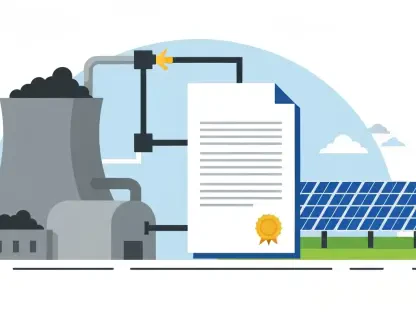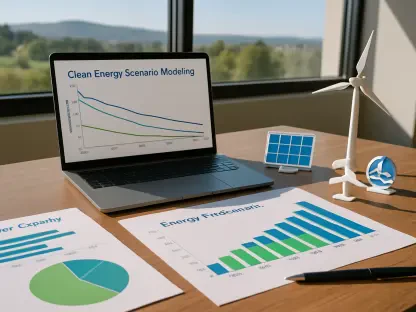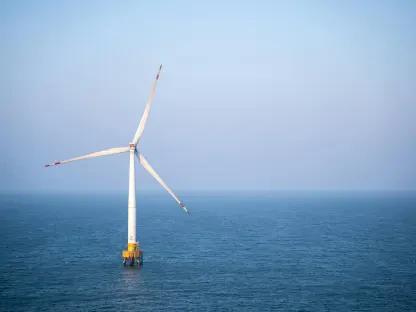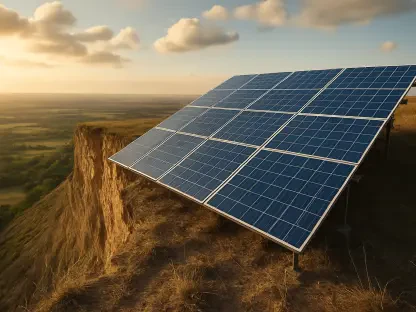In the realm of energy economics and climate science, few are as knowledgeable as Christopher Hailstone. With years of experience in energy management, renewable energy, and electricity delivery, Christopher also specializes in utilities, offering valuable insights into grid reliability and security. As Americans brace for potentially rising power bills this summer, we delve into the factors driving these changes and the broader implications for consumers and utilities alike.
Can you explain why power bills are expected to rise this summer?
The primary reason for the expected increase in power bills this summer is the forecasted rise in electricity prices. These prices are climbing due to a combination of factors including increased demand for energy in hotter weather and higher operational costs for utilities. Even though energy consumption is projected to slightly decrease, the increasing cost of producing electricity offsets this, leading to higher monthly bills.
How does EIA’s forecast for electricity prices compare to last summer’s average?
According to the EIA, consumers should expect to see a slight increase in their power bills this summer, with an average monthly cost rising from last summer’s $173 to $178. This reflects a broader trend of rising electricity costs, influenced by a variety of economic and climatic factors.
Why is New England expected to experience the largest increase in power bills?
New England is particularly susceptible to higher energy costs due to its limited energy supply options and reliance on imports for electricity generation. The region’s infrastructure can also struggle with efficiency and capacity issues during peak demand, leading to more significant price hikes compared to other U.S. regions.
How are the Pacific and Mountain regions expected to fare in terms of power bills?
The Pacific and Mountain regions might see a different trend compared to New England. These areas could experience a slight decline in power bills, likely due to their advancements in renewable energy sources and more moderate climate predictions, which reduce overall electricity demand and cost.
What assumptions did the EIA make regarding summer temperatures and power consumption in their analysis?
The EIA anticipates slightly cooler summer temperatures, forecasting about a 1% decline in cooling degree days compared to last summer. This assumption is expected to result in modest reductions in residential electricity consumption.
Why does Mark Wolfe believe that EIA’s projections are conservative?
Mark Wolfe suggests that the EIA’s forecasts might be conservative because they presume temperatures will remain relatively stable. However, Wolfe points out that other variables, such as rising electricity prices, exert more influence over households’ power costs than just temperatures.
How do electricity prices in 2025 compare to those projected for 2026?
Electricity prices are predicted to continue their upward trend, with the EIA projecting an average price increase from 17 cents/kWh in 2025 to 17.6 cents/kWh in 2026. This ongoing rise reflects broader economic pressures and a growing demand for energy resources.
What factors are contributing to the increase in electricity prices?
The increase in electricity prices is driven by several factors, including higher fuel costs, maintenance and upgrades to aging infrastructure, and the need to integrate more complex renewable energy systems. Additionally, regulatory changes and regional supply challenges play significant roles in this pricing trend.
How does NAEDA’s forecast for the average cost of electricity in 2025 compare to last year’s costs?
NAEDA projects that the average cost of electricity in 2025 will increase to $784, which marks a 6.2% rise from last year’s $737. This upsurge equates to approximately $196 per month over the four-month summer period, underscoring the increasing financial burden on consumers.
How does climate change affect temperature trends and energy consumption?
Climate change contributes to rising temperatures, which in turn heighten the need for cooling systems and increase energy consumption. This demand places additional stress on the power grids and elevates the overall costs of electricity as utilities strive to meet these energy needs amidst shifting weather patterns.
By how much has the cost of electricity risen compared to average inflation rates?
The cost of electricity has been escalating at a rate faster than general inflation, reflecting complex global dynamics including energy supply chain disruptions and increased operational expenses borne by power producers.
What percentage more are consumers expected to pay for power this summer compared to 2024 after adjusting for inflation?
After adjusting for inflation, consumers are expected to pay around 4.3% more for their power this summer compared to 2024. This substantial increment highlights the significant economic pressure on households amidst the ongoing inflationary environment.
Can you elaborate on NASA’s findings regarding the summer of 2024?
NASA recorded the summer of 2024 as the hottest on record, demonstrating both the immediate impacts of climate change and the associated challenges it poses for energy consumption and grid reliability.
What is NOAA’s expectation for summer temperatures this year?
The NOAA anticipates hotter-than-average temperatures this summer, which could further strain electricity systems as the demand for cooling surges alongside rising temperatures.
What have utilities and grid operators in the Northeast been advising due to the current heatwave?
Utilities and grid operators have been advising conservation measures to mitigate the pressure on the electric delivery systems. They suggest reducing the usage of high-energy appliances during peak hours to alleviate the stress on equipment and prevent outages.
What specific measures has Consolidated Edison in New York taken during the heatwave?
Consolidated Edison has responded by issuing conservation calls to its customers and restoring service to thousands affected by outages. The utility emphasizes reducing usage of energy-intensive appliances during critical times to manage grid stress.
How has ISO New England responded to the hot, humid weather conditions?
ISO New England has issued precautionary alerts indicating potential tight operating conditions but has clarified that these do not yet constitute an emergency. They continue to monitor and manage the grid carefully to ensure stability and service continuity.
What potential impacts could the higher-than-normal heat in the Northeast have on communities and utilities?
Higher-than-normal heat exacerbates health risks such as heat-related illnesses and imposes additional strain on community resources and infrastructures. For utilities, it significantly increases the demand for electricity, raising the likelihood of outages and operational challenges.
What does the North American Electric Reliability Corp. say about the sufficiency of resources this summer?
The North American Electric Reliability Corp. reassures that resource sufficiency should be adequate under normal operating conditions this summer. However, they remain vigilant for risks that may arise during extreme heat scenarios, which could jeopardize grid reliability.
How does the EIA define “normal operating conditions” when predicting the risk of blackouts?
The EIA defines “normal operating conditions” as situations under typical temperature ranges and predictable demand, without unexpected stressors such as natural disasters or extreme weather events that could disrupt the balance of supply and demand.
What is the expected change in cooling degree days for this summer compared to 2024 according to the EIA?
The EIA expects a slight decline in cooling degree days, approximately 1% less than the summer of 2024. This metric is crucial in assessing anticipated energy consumption related to cooling needs.
Why does the EIA consider weather a significant source of uncertainty in its forecasts?
Weather remains a significant source of uncertainty due to its inherent unpredictability and immense influence on energy demand. Unexpected shifts in temperatures can drastically alter consumption patterns, impacting forecasts and operational readiness.
In what ways might temperatures hotter than expected impact electricity bills, particularly in southern states?
In southern states, where temperatures can surge beyond projections, electricity bills are likely to escalate sharply. The heavy reliance on air conditioning during such conditions intensifies energy use, driving up costs due to increased consumption and potential supply constraints.
Do you have any advice for our readers?
Given the forecasted rise in power bills, it’s prudent for consumers to adopt energy-saving practices. Simple changes like utilizing energy-efficient appliances, adjusting thermostats, and participating in utility conservation programs can make a significant difference in managing costs and conserving energy.









